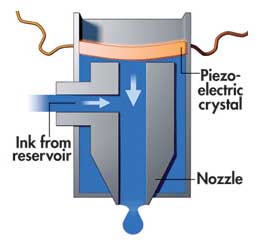You know the saying about setting goals just beyond your reach but not so far out they’re hopeless. That’s been on my mind as I’ve turned the RepRap project over in my head the past few days. And after having just read a website entry by rapid-prototyping guru, Terry Wohler, it’s feeling like an echo chamber in here. There’s a lot of truth in what Mr. Wohler says. A personal rapid prototyper is not going to put Wal*Mart out of business; after all, current manufacturing is geared towards, and Wal*Mart’s very successful strategy is centered on, the basic concept of high-volume/low-price (aka mass consumption). There’s a reason injection molding has been around for so long: cycle times generally stay under a minute and are often 30-40 seconds. Watching a press in action is like watching a rabbit in a carrot patch ingesting raw material and dropping “pellets” into a bin. It’s fast and requires little human interaction (if any). There is of course time and capital expense to create the tooling, but even that is likely to go through a dramatic shift in the near future (courtesy of rapid prototype-technology molds). So it’s reasonable to assume I’ll be wormfood before an RP device approaches the benchmarks set by those processes.
The real issues for me center on defining the User, meeting their needs, and also anticipating future needs of which that User is currently unaware (which, I might add, is how many successful companies are now addressing product development). I suspect, but don’t yet know, that there are probably very different ideas about who the target user is and what their circumstances are. And that concerns me more than the design and technology challenges that Mr. Wohler raises. I can imagine the results of this RepRap effort looking a bit like NASA’s recently announced Water Recovery System which is being recruited for humanitarian purposes planetside. You can read my admittedly pessimistic comments about that repurposing on WorldChanging’s site. Which is why I’m wondering if this project actually has two components: one technological and just beyond our grasp, and another ergonomic that is perhaps not even being considered.

 Popular Science online reminds everyone of the versatility of the humble technology used in the ubiquitous inkjet printer in this
Popular Science online reminds everyone of the versatility of the humble technology used in the ubiquitous inkjet printer in this